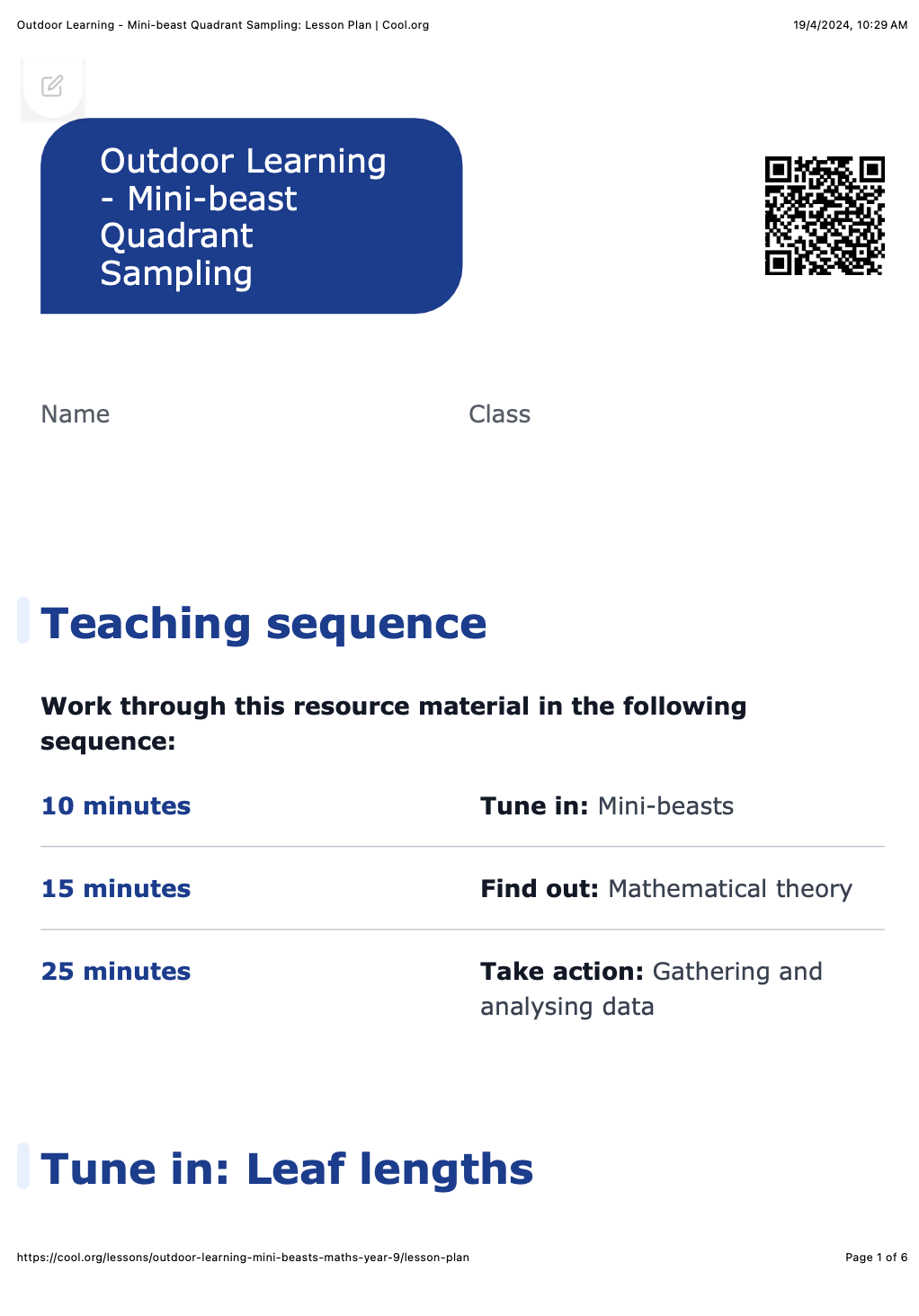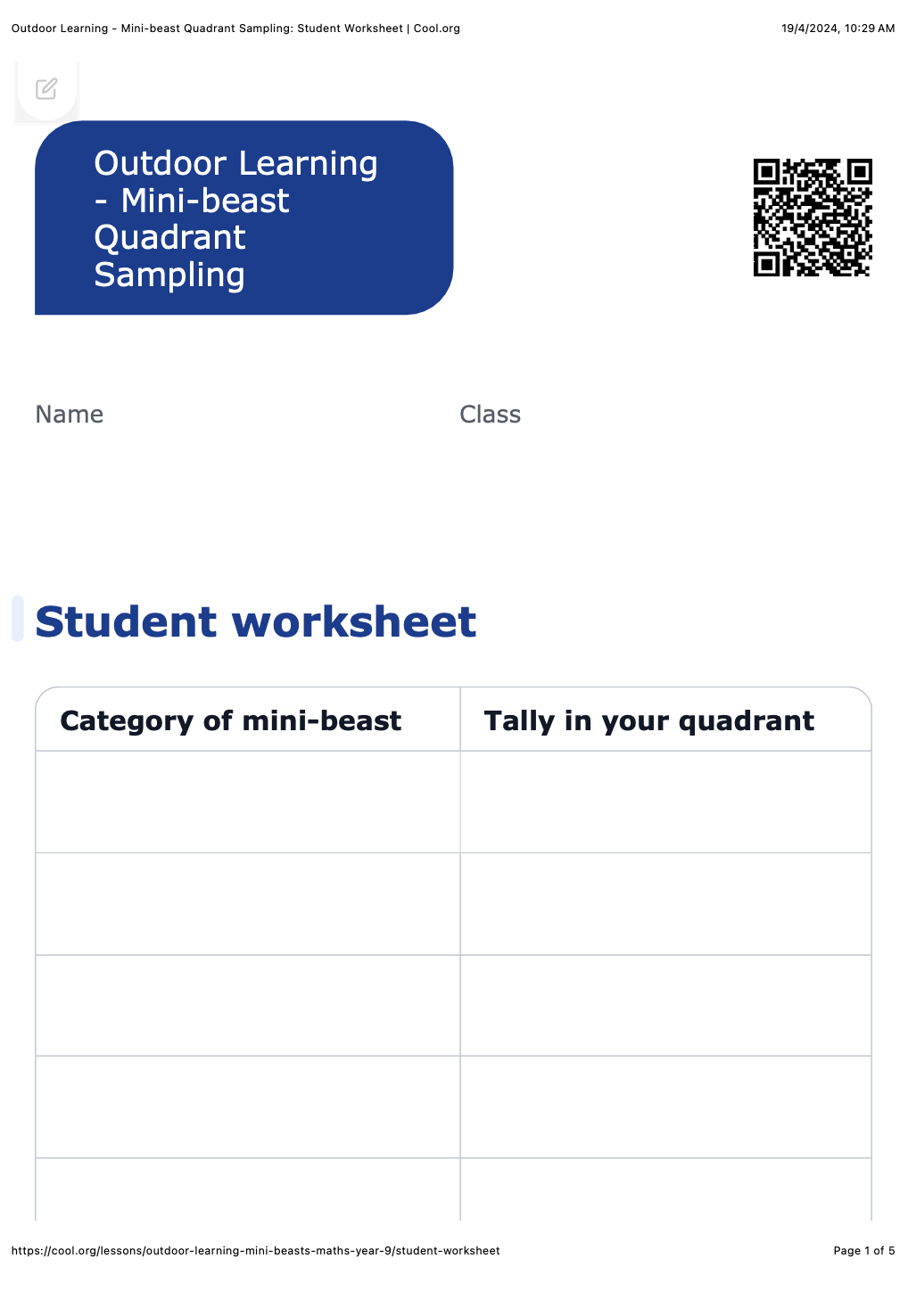Lesson summary
Students design and carry out a survey, collecting data on the mini-beast populations of the schoolyard.
Learning intentions:
Students will...
- identify corresponding, alternate and co-interior relationships between angles formed when parallel lines are crossed by a transversal.
Success criteria:
Students can...
- find angles in nature.
Lesson guides and printables
Curriculum links
Select your curriculum from the options below.
Lesson details
Curriculum mapping
Australian curriculum (v9.0) content descriptions:
Mathematics:
Students learn to:
- acquire data sets for discrete and continuous numerical variables and calculate the range, median, mean and mode; make and justify decisions about which measures of central tendency provide useful insights into the nature of the distribution of data (AC9M7ST01)
General capabilities: Critical and Creative Thinking.
Cross-curriculum priority: Sustainability.
Relevant parts of Year 7 achievement standards:
By the end of Year 7, students plan and conduct statistical investigations involving discrete and continuous numerical data, using appropriate displays. Students interpret data in terms of the shape of distribution and summary statistics, identifying possible outliers.
Resources required
- 4 metre length piece of string – one per group
- Mini-beast Tally Table
- Pegs (optional) – four per group
- Sampling Instructions – Quadrat Sampling
- Student Worksheet – one copy per student
Skills
This lesson is designed to build students’ competencies in the following skills:
- problem-solving
- critical thinking
Additional info
Level of teacher scaffolding: Medium - oversee activity and facilitate discussion.
This lesson is designed to be taught outside. It contains all the tools required for students to reap the benefits of being outdoors while learning the outcomes of the Australian Curriculum. By spending time outdoors and connecting to nature, students are more likely to care for and conserve nature as adults.
This is an original Cool+ lesson.
Related professional learning
Introduction to Secondary STEM
Quick summary: This course will help you understand the essential foundations of STEM teaching and learning and provide opportunities to help build knowledge, skills and confidence to take on STEM in your classroom.




Welcome back!
Don't have an account yet?
Log in with:
Create your free Cool.org account.
Many of our resources are free, with an option to upgrade to Cool+ for premium content.
Already have an account?
Sign up with:
By signing up you accept Cool.org's Terms and Conditions(Opens in new tab) and Privacy Policy(Opens in new tab).